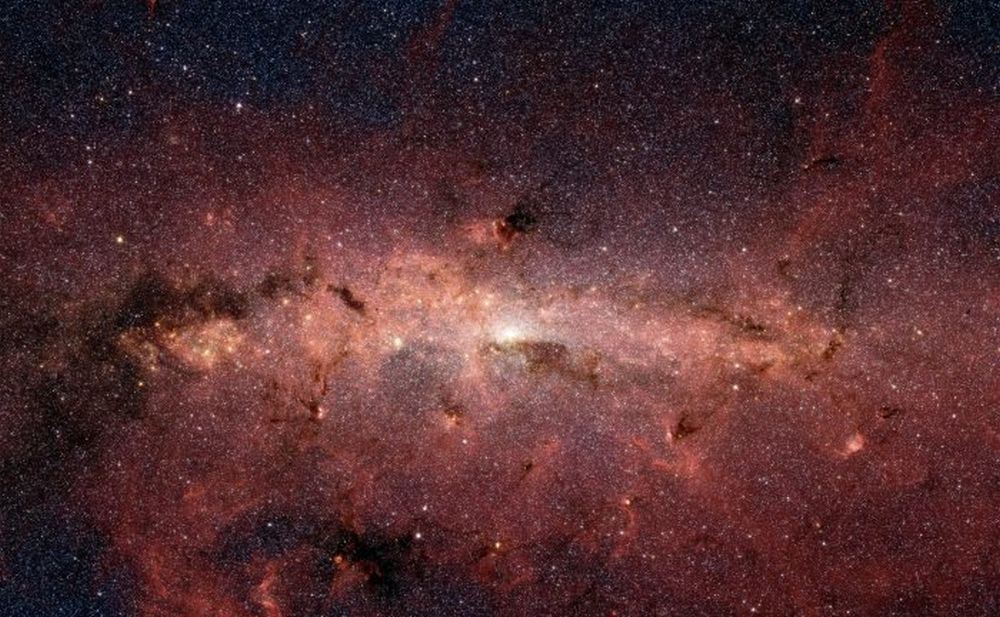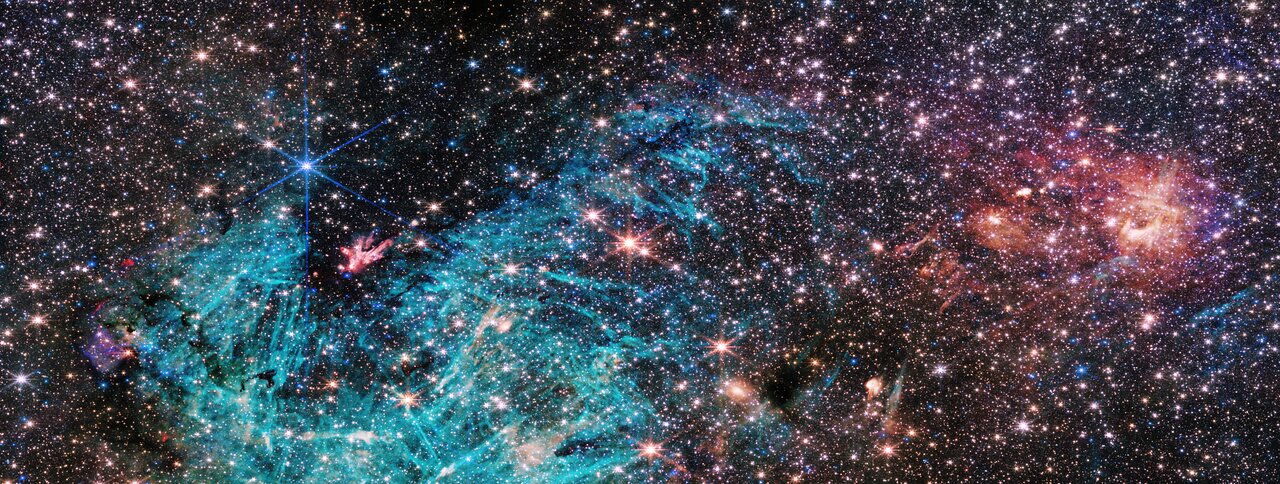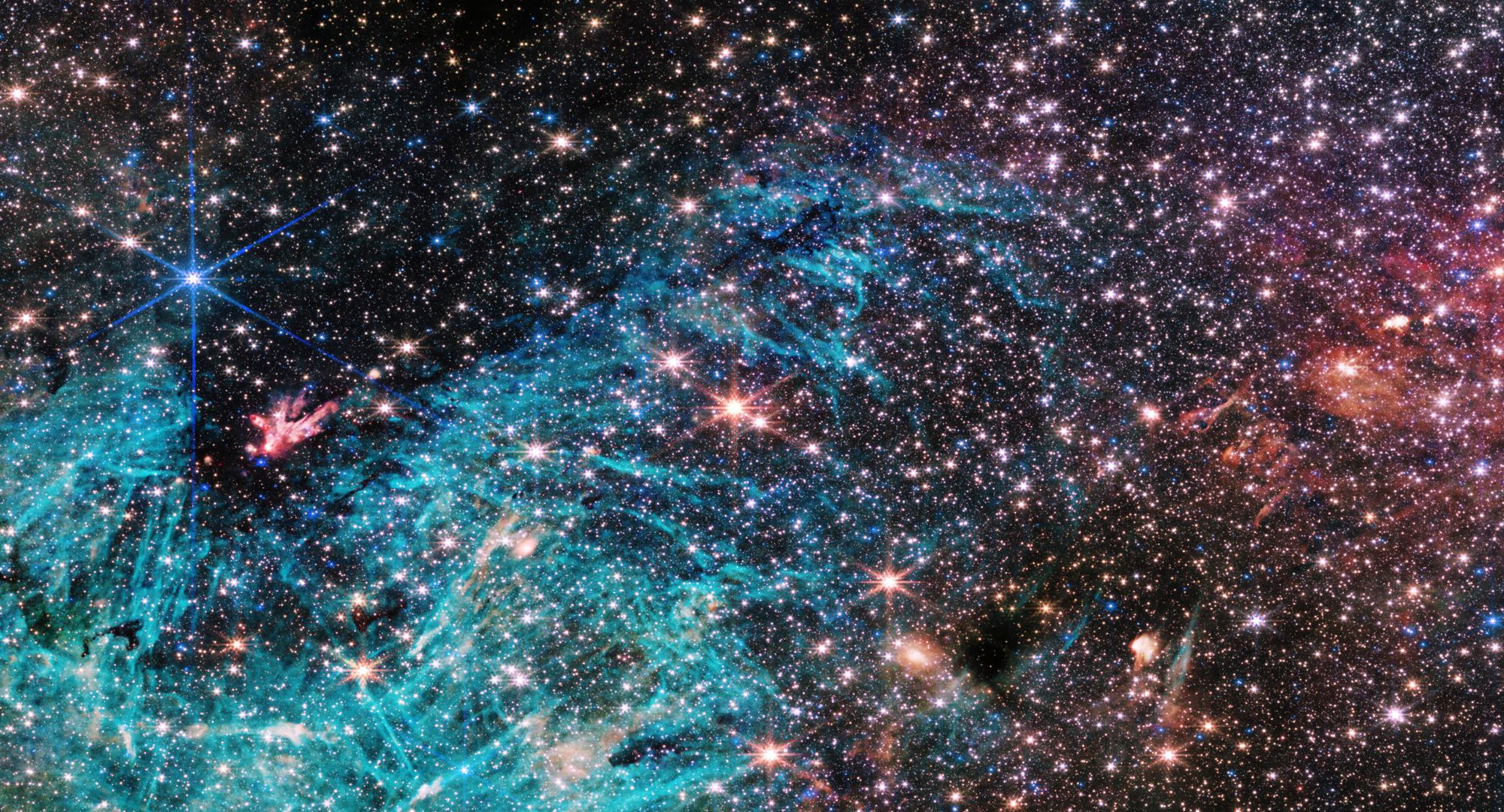Nestled on the slopes of Cerro La Negra at an elevation of 13,000 feet is an unusual-looking observatory. Known as the High-Altitude Water Cherenkov (HAWC) observatory, it looks like a tightly packed collection of grain silos, which is essentially what it is. But rather than holding grain, the silos are each filled with 188,000 liters of water and four photomultiplier tubes. While it’s an unusual setup, it’s what you need to observe high-energy gamma rays from deep space.
Continue reading “There's a Particle Accelerator at the Center of the Milky Way”Simulating the Accretion Disk Around a Black Hole
Black holes are by their very nature, challenging to observe and difficult to spot. It’s usually observations of the accretion disk that reveal properties of the hidden black hole. There is often enough material within the accretion disk to make them shine so brightly that they can often be among the brightest objects in space. A wonderful image has been released which shows the highest resolution simulation of a black hole accretion disk ever created.
Continue reading “Simulating the Accretion Disk Around a Black Hole”Finally! Astronomers Find the Missing Link Between Stellar and Supermassive Black Holes

While black holes are known as the most destructive objects in the universe, their evolution is largely shrouded in mystery. This is because while astronomers are familiar with supermassive black holes that exist at the center of galaxies like our own and black holes whose masses are less than 100 times the size of our Sun, the notion of intermediate-mass black holes (IMBHs) have largely eluded discovery. However, this might change with the recent discovery of a black hole candidate that could exist within the globular cluster, Omega Centauri, and holds the potential to be the “missing link” in scientists better understanding black hole evolution.
Continue reading “Finally! Astronomers Find the Missing Link Between Stellar and Supermassive Black Holes”The Nearby Star Clusters Come from Only Three Places

Many astronomy-interested people know of the Hyades and the Pleiades. They’re star clusters in the Taurus constellation. They’re two out of a handful of star clusters that are visible to the unaided eye under dark sky conditions.
It turns out that these clusters, along with more than 150 other nearby clusters, all originated in only three massive star-forming regions.
Continue reading “The Nearby Star Clusters Come from Only Three Places”Hot Gas is Being Vented Away from the Center of the Milky Way

Studying gas in the Universe is no easy task. We often look to ‘non-visible’ wavelengths of the electromagnetic spectrum such as X-rays. The Chandra X-Ray observatory has been observing a vent of hot gas blowing away from the centre of the Milky Way. Located about 26,000 light years away, the jet extends for hundreds of light years and is perpendicular to the disk of the Galaxy. It is now thought the gas has been forced away from the centre of the Milky Way because of a collision with cooler gas lying in its path and creating shockwaves.
Continue reading “Hot Gas is Being Vented Away from the Center of the Milky Way”This Globular Cluster is Plunging Toward the Milky Way’s Centre

Globular clusters (GCs) are spherical groups of stars held together by mutual gravity. Large ones can have millions of stars, and the stars tend to be older and have lower metallicity. The Milky Way contains more than 200 globulars, possibly many more, and most of them are in the galaxy’s halo, the outer reaches of the galaxy.
But they’re not all in the halo, and astronomers are keen to find ones nearest the galactic centre. Now, researchers have found one GC that’s plunging toward the Milky Way’s Centre.
Continue reading “This Globular Cluster is Plunging Toward the Milky Way’s Centre”Webb’s Infrared Eye Reveals the Heart of the Milky Way

The JWST is taking a break from studying the distant Universe and has trained its infrared eye on the heart of the Milky Way. The world’s most powerful space telescope has uncovered some surprises and generated some stunning images of the Milky Way’s galactic center (GC.) It’s focused on an enormous star-forming region called Sagittarius C (Sgr C).
Continue reading “Webb’s Infrared Eye Reveals the Heart of the Milky Way”Gaze Into the Heart of the Milky Way in This Latest JWST Image

Thanks to its infrared capabilities, the James Webb Space Telescope (JWST) allows astronomers to peer through the gas and dust clogging the Milky Way’s center, revealing never-before-seen features. One of the biggest mysteries is the star forming region called Sagittarius C, located about 300 light-years from the Milky Way’s supermassive black hole. An estimated 500,000 stars are forming in this region that’s being blasted by radiation from the densely packed stars. How can they form in such an intense environment?
Right now, astronomers can’t explain it.
Continue reading “Gaze Into the Heart of the Milky Way in This Latest JWST Image”Astronomers Want JWST to Study the Milky Way Core for Hundreds of Hours

To understand the Universe, we need to understand the extreme processes that shape it and drive its evolution. Things like supermassive black holes (SMBHs,) supernovae, massive reservoirs of dense gas, and crowds of stars both on and off the main sequence. Fortunately there’s a place where these objects dwell in close proximity to one another: the Milky Way’s Galactic Center (GC.)
Continue reading “Astronomers Want JWST to Study the Milky Way Core for Hundreds of Hours”A Mysterious Blob Near the Milky Way’s Supermassive Black Hole Might Finally Have an Explanation
At the center of the Milky Way, there is a massive persistent radio source known as Sagittarius A*. Since the 1970s, astronomers have known that this source is a supermassive black hole (SMBH) roughly 4 million times the mass of our Sun. Thanks to advancements in optics, spectrometers, and interferometry, astronomers have been able to peer into Galactic Center. In addition, thanks to the international consortium known as the Event Horizon Telescope (EHT), the world got to see the first image of Sagittarius A* (Sgr A*) in May 2022.
These efforts have allowed astronomers and astrophysicists to characterize the environment at the center of our galaxy and see how the laws of physics work under the most extreme conditions. For instance, scientists have been observing a mysterious elongated object around the Sgr A* (named X7) and wondered what it was. In a new study based on two decades’ worth of data, an international team of astronomers with the UCLA Galactic Center Group (GCG) and the Keck Observatory have proposed that it could be a debris cloud created by a stellar collision.
Continue reading “A Mysterious Blob Near the Milky Way’s Supermassive Black Hole Might Finally Have an Explanation”


